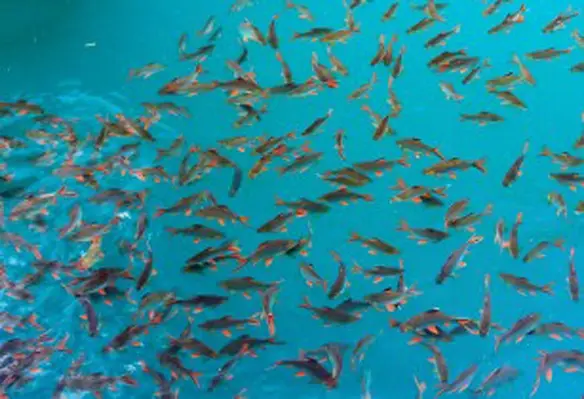The growth in the US$232bn global aquaculture sector could be undermined by a failure to manage environmental, social and governance (ESG) risks including climate change, pollution and antibiotic resistance, according to a report by FAIRR, a global network of investors addressing ESG issues in protein supply chains
The report, launched on World Environment Day, highlights the rising investment opportunities in areas such as fish health innovations and alternative feeds.
The report, ‘Shallow returns?,’ is produced by FAIRR, a network backed by investors managing more than US$12 trillion of assets including Aviva Investors, CANDRIAM, DNB Asset Management and Norwegian pension group KLP.
The report highlights average annual growth in the aquaculture sector of almost six per cent and finds that fish farming has overtaken wild fishing as the main provider of seafood on our plates since 2014. However, it warns that much of the growth is based on more intensive, high-density farming that is associated with ESG risks including:
Climate change: The sector is both a significant contributor to climate change and is highly exposed to its impacts. Farmed marine fish production in Southeast Asia, one of the world’s biggest aquaculture regions, is expected to drop up to 30 per cent by 2050 due to rising sea temperatures and ocean acidification.
Algal blooms: Norway is currently suffering from its worst algal bloom in 30 years, which has killed an estimated eight million salmon so far. Chile has suffered from algal blooms in the past.
Antibiotics: In some regions, aquaculture companies rely on excessive use of antibiotics to maintain production, leaving the sector highly exposed to global efforts to fight antibiotic resistance. Chilean salmon production, for example, is estimated to use antibiotic doses up to ten times higher than typically used in chicken production.
Fish feed supply: Farmed salmon and shrimp require fishmeal and fish oil in their diets, making the sector highly dependent on rapidly-depleting wild fish stocks for future growth. According to the report, the numbers do not add up. If we are to expand aquaculture production to meet global demand, probably doubling it by 2050, then this will put considerable pressure on global fish stocks.
Governance falling short: In the last month, a class-action lawsuit was filed in the US accusing major players in Norway’s farmed salmon industry of price fixing, and the report argues that this allegation is symptomatic of a wider lack of transparency in the sector.
Meeting ESG challenges
· Use of probiotics to reduce antibiotic use
· Use of alternatives to fishmeal including feed made from bacteria, algae and insects
· Innovative start-ups emulating fish products using only plant-based ingredients
Maria Lettini, director of FAIRR, said, “Investors should be aware of the sustainability risks in the aquaculture sector before they wade in too deeply. From effluents to emissions, this sector must address significant environmental and public health challenges if it is to prosper over the long-term. There are clear steps which must be taken to manage these risks. For example, aquaculture operations should be certified against global standards that meet FAO guidelines.”
“The market should also consider greater cultivation of species that remove marine pollution rather than contribute to it - such as mussels and oysters. In addition, farming these species brings minimal animal welfare concerns and does not require fishmeal-based feed,” Lettini added.





